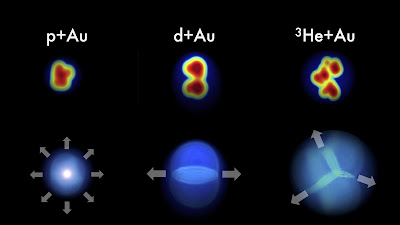Topics: Astrophysics, Fluid Mechanics, Nuclear Physics, Relativity, Theoretical Physics
Nuclear physicists analyzing data from the PHENIX detector at the Relativistic Heavy Ion Collider (RHIC)—a U.S. Department of Energy (DOE) Office of Science user facility for nuclear physics research at Brookhaven National Laboratory—have published in the journal Nature Physics additional evidence that collisions of miniscule projectiles with gold nuclei create tiny specks of the perfect fluid that filled the early universe.
Scientists are studying this hot soup made up of quarks and gluons—the building blocks of protons and neutrons—to learn about the fundamental force that holds these particles together in the visible matter that makes up our world today. The ability to create such tiny specks of the primordial soup (known as quark-gluon plasma) was initially unexpected and could offer insight into the essential properties of this remarkable form of matter.
"This work is the culmination of a series of experiments designed to engineer the shape of the quark-gluon plasma droplets," said PHENIX collaborator Jamie Nagle of the University of Colorado, Boulder, who helped devise the experimental plan as well as the theoretical simulations the team would use to test their results.
Compelling evidence for small drops of perfect fluid, Brookhaven National Laboratory, Phys.org

Comments